There are more than 70 different types of plants in the St. Clare Garden at Santa Clara University. The plants were chosen to convey the values, practices, and traditions of the middle ages. Medieval gardeners typically mixed practical herbs with purely decorative flowers, and people visited gardens for strolling and sitting, seeking pleasure and refreshment.
Alphabetical Plant List of St. Clare’s Garden (PDF)
Layout of St. Clare Garden (PDF)
Some Traditional Uses of Plants in the St. Clare Garden
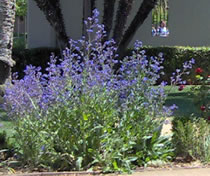
|
Anchusa or alkanet (Anchusa azurea) has been a source for red, pink, and blue dye since the time of the ancient Egyptians. |
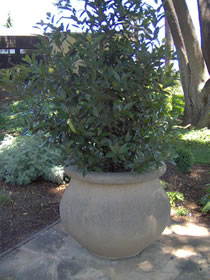
|
The leaves of the Bay laurel (Laurus nobilus), a broadleaf evergreen tree, are still used in cooking today. Its name comes from the Latin word “laus” praise, referring to crown of bay leaves worn by victorious Roman heroes and poets. The title “Poet Laureate” refers to this ancient tradition. |
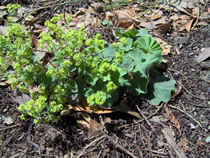
|
Lady’s mantle (Alchemilla mollis) refers to the Virgin Mary. It was reputed to possess magical powers. Its dew was collected by alchemists for experiments. Medicines made from the plant were used to treat female ailments. |
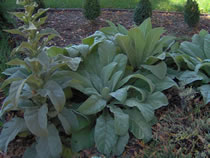
|
Soft mullein leaves (Verbascum thapsus) were used in shoes to cushion the feet. Its tall flower stalk was also used as a test of fidelity. The lover would bend stalk towards direction of his truelove’s house-if it resumed upright position his lover was true; if it snapped in half his lover was false. |
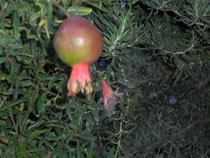
|
Medieval people believed that the pomegranate (Punica granatum) was the tree of knowledge of good and evil in the Garden of Eden. It was also the fruit associated with the Greek fertility myth of Persephone. The crown of King Solomon is said to have been modeled on the fluted end of the fruit. Pomegranate was eaten to increase one’s fertility. The powerful alkaloids in pomegranate rind are effective for treating tapeworm. |
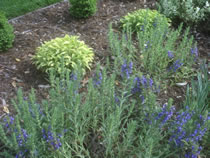
|
Rosemary (Rosmarinus officinalis) symbolized remembrance: Greek scholars work garlands of rosemary during exams to improve their memory. In the middle ages it was used as rushes to cover floors, burnt as incense, put in wardrobes to prevent moths, and taken for liver disorders. |
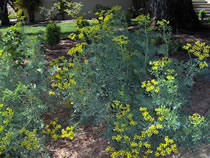
|
Rue (Ruta graveolens) was called the herb of grace because it was used for sprinkling holy water during mass, and was thought to ward off fever, witchcraft, and the evil eye. |
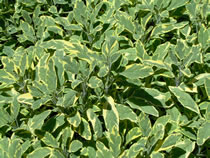
|
Sage (Salvia officinalis) came from the Latin word “salvere” meaning “to be saved” or “to be well.” Since the time of the ancient Greeks and Romans it was believed to promote long life and was used for numerous ailments, being a virtual “cure-all.” |
This web site was written and designed by Nancy Lucid whose research was supported by a generous grant from the Bannan Institute for Jesuit Educational Mission at Santa Clara University.
For questions regarding the web site contact Nancy Lucid. All rights reserved.